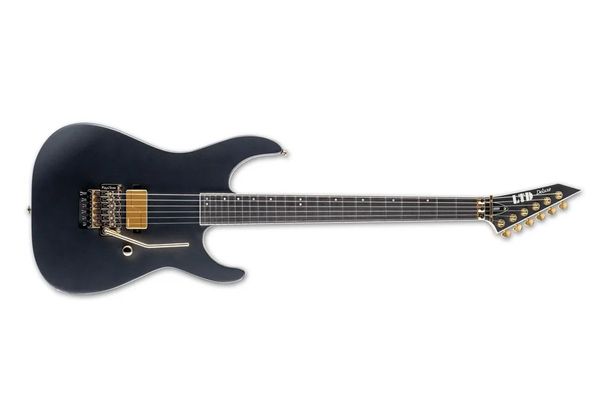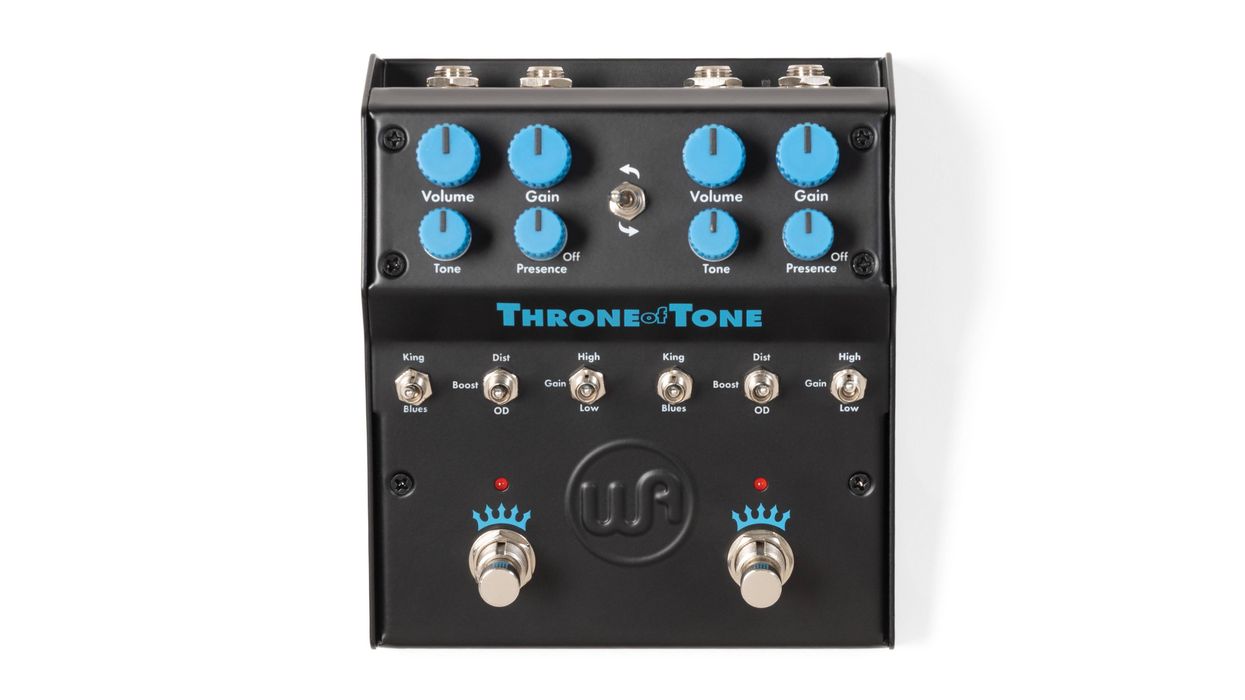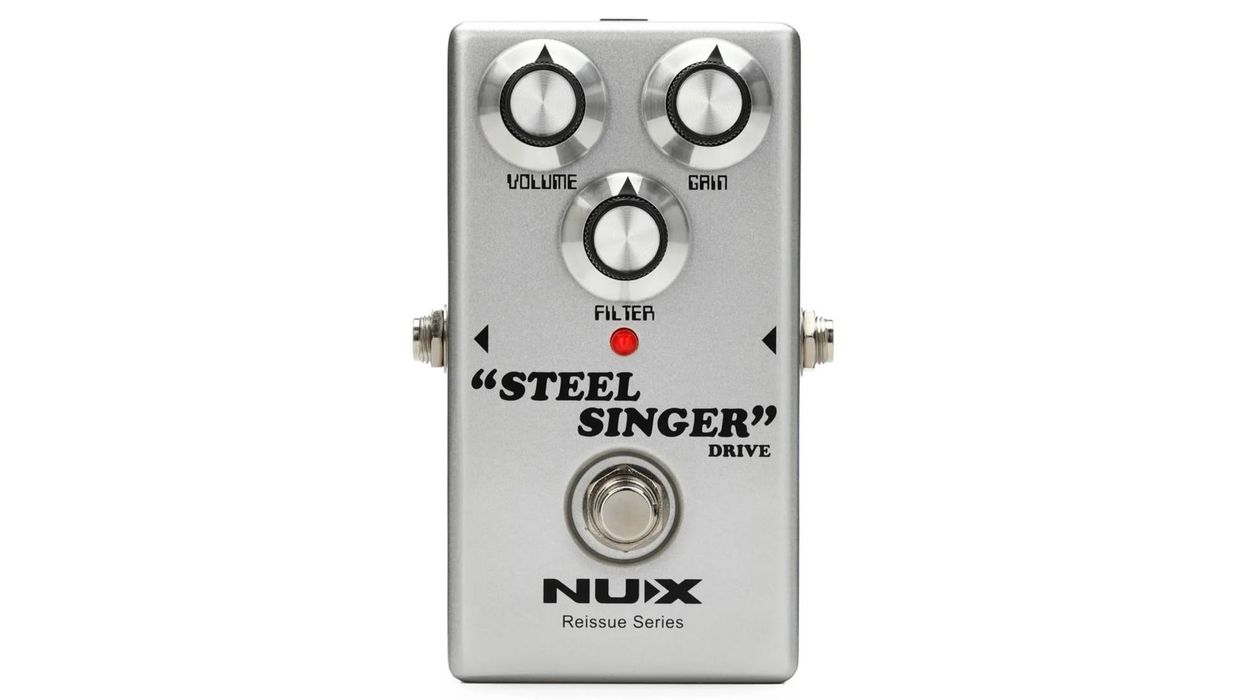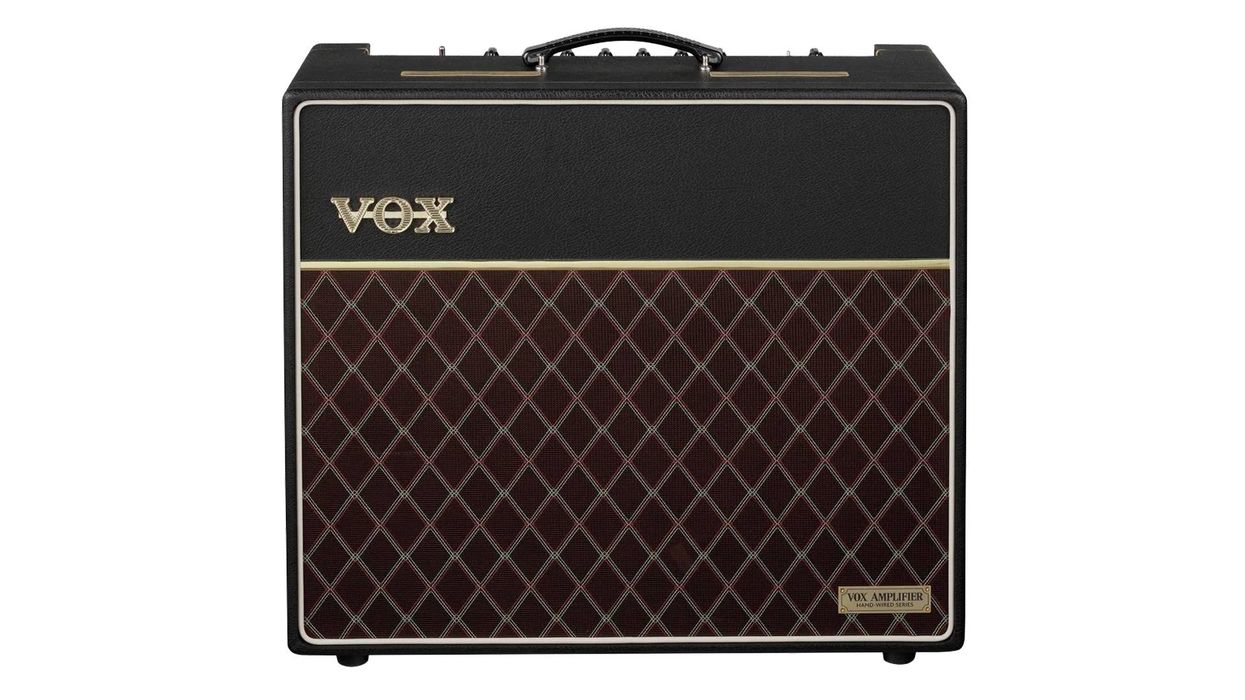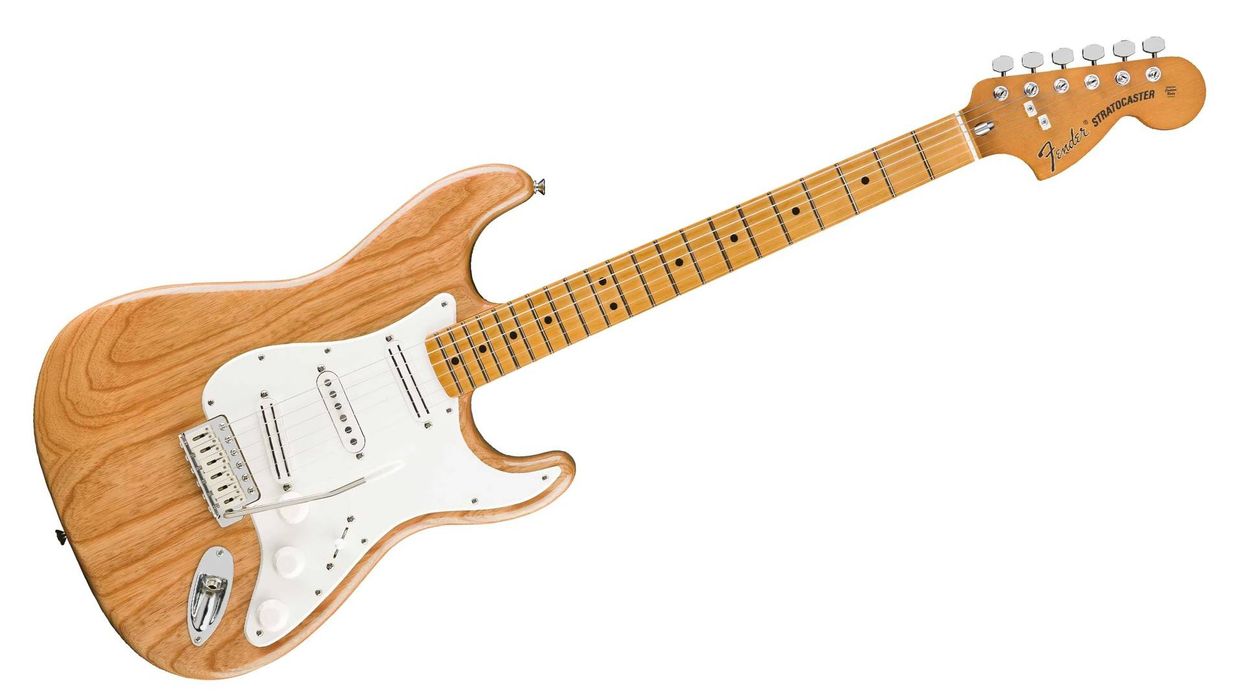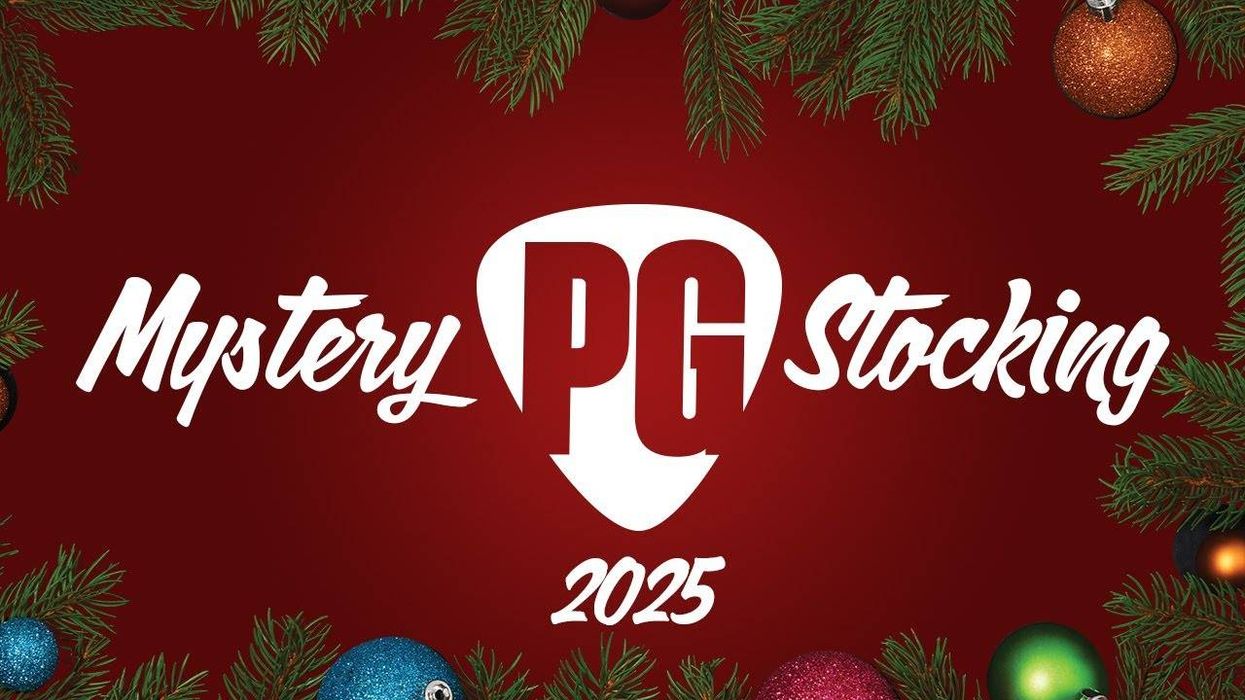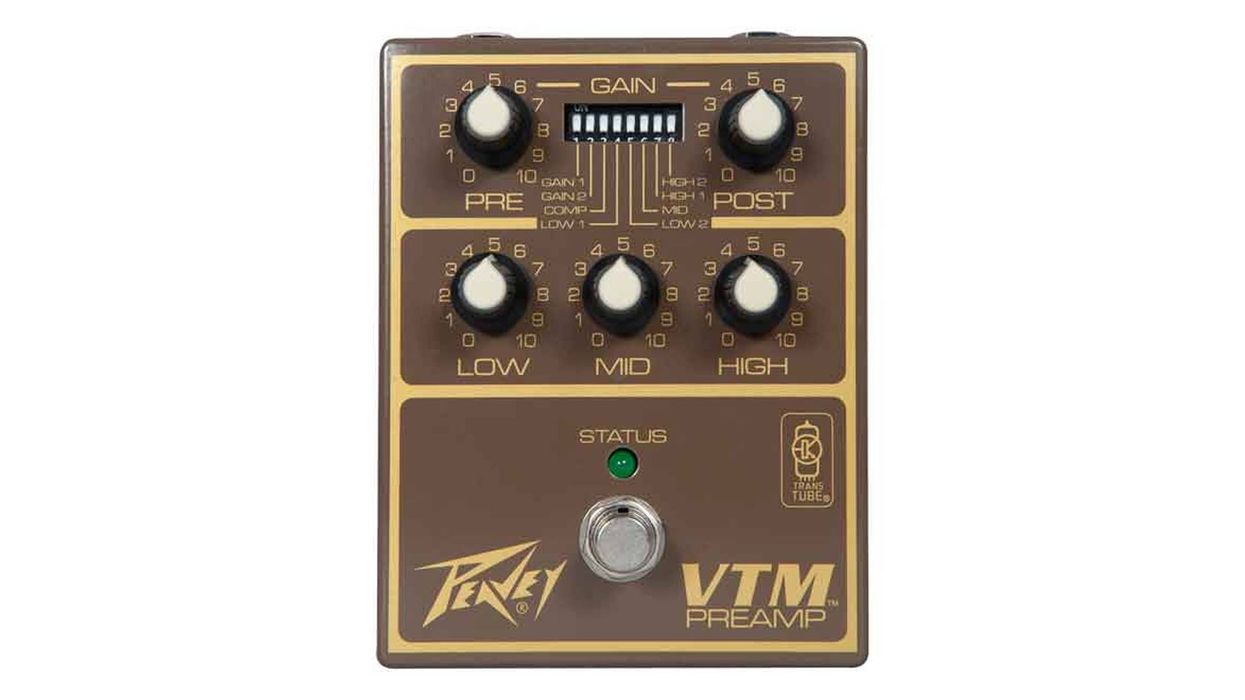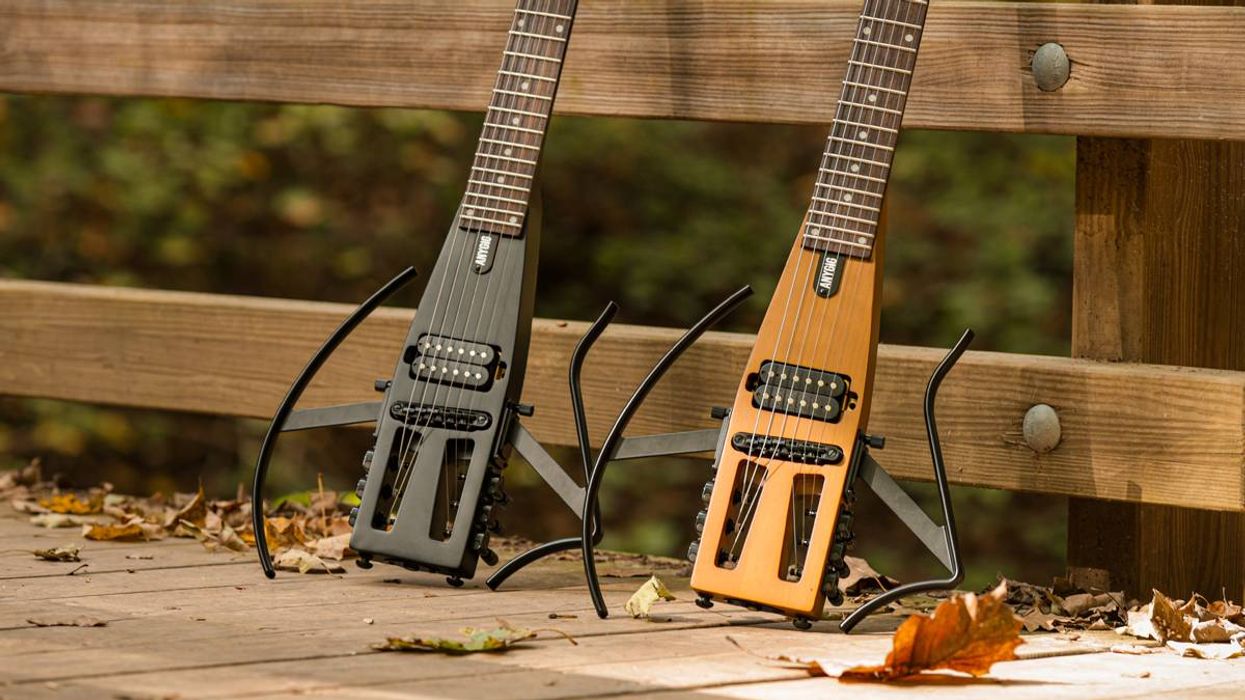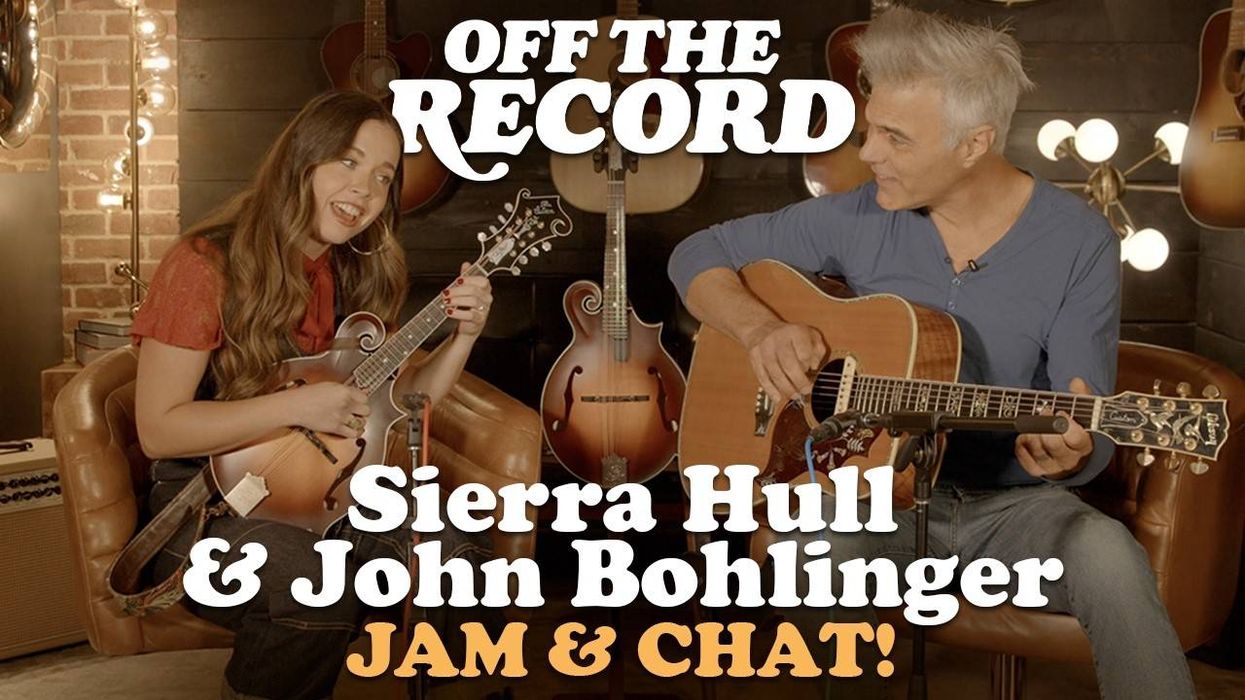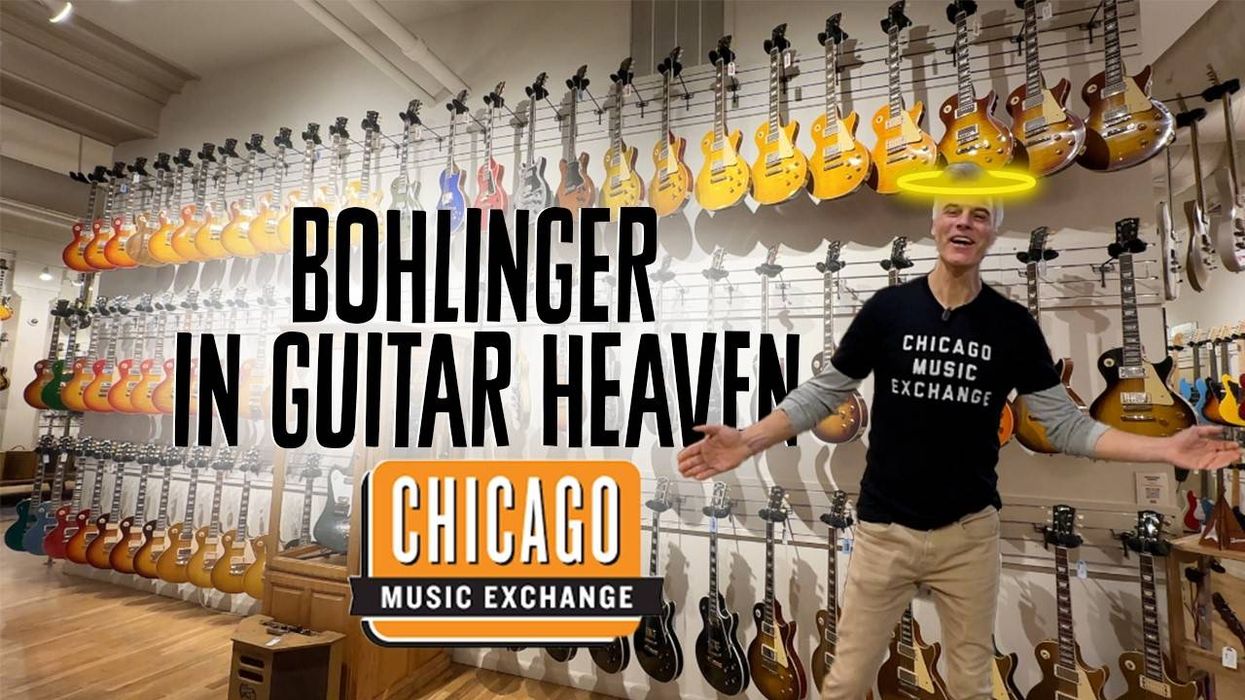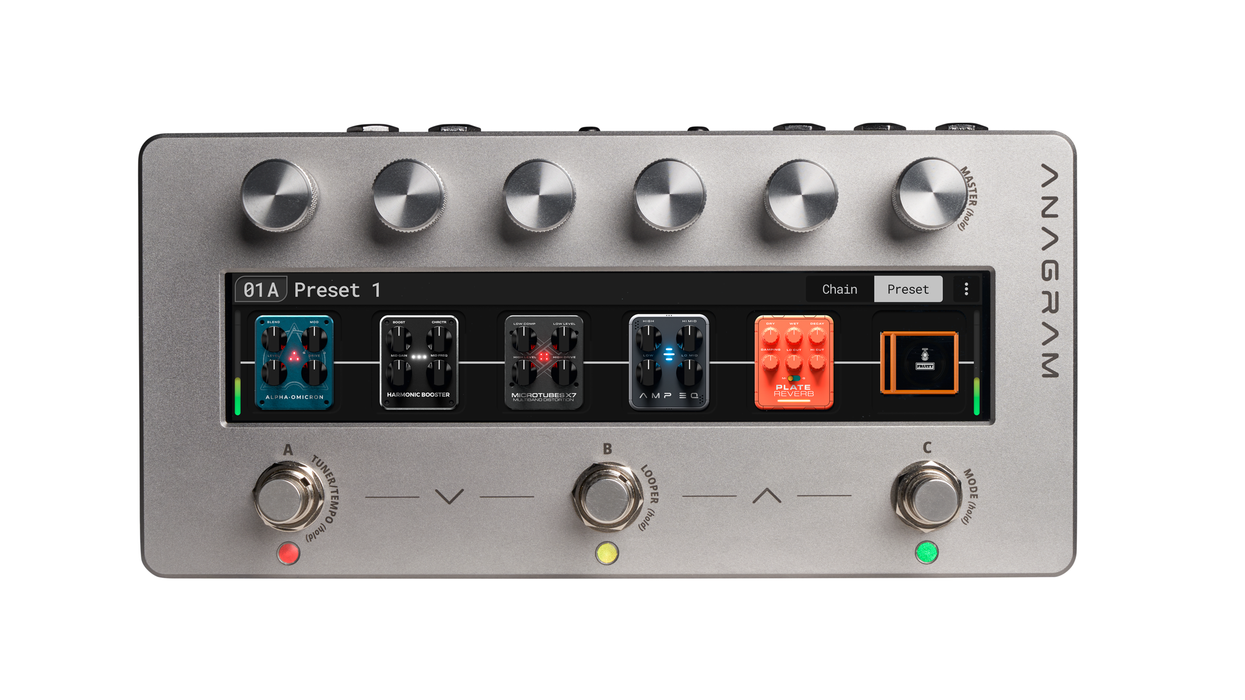Whether it’s George Lynch’s tiger-striped guitar, James Hetfield’s Truckster and Snakebyte signature models, or Kirk Hammett’s Mummy and V-shaped axes, ESP has never shied away from making bold visual statements. That style helped make the company among the most visible and important guitar brands in the metal landscape. But ESP’s ongoing relevance is also about building guitars that make players feel like their fingers are flying and detonating sticks of dynamite.
So chasing big sounds is every bit as much a priority as taking cosmetic risks. Visually speaking, relative restraint is on display in the new LTD M-1001, a streamlined and fast affair with a single Fishman Fluence humbucker and Floyd Rose 1000 that keeps things elemental and understated, at least by ESP standards.
Speed Racer
The Korea-made M-1001 is part of ESP’s LTD line, an affordable series that puts luxurious ESPs in the reach of regular-people players. At $1,399, the LTD M-1001 isn’t exactly a bargain-rack affair. But it’s also not especially expensive for a guitar built this well. Fancy gold appointments are everywhere, from the strap buttons and input jack to the Floyd Rose 1000 double-locking tremolo, Grover tuners, and Fishman Fluence Modern humbucking pickup in the bridge. Against the alder body’s charcoal metallic satin finish, the gold bling is captivating but not too flashy. It’s an attractive and sleek guitar, though I noticed that the satin finish can be prone to catching fingerprints. The guitar also ships with a hardshell case, which is not an inclusion you can take for granted these days.
ESP makes much of the M-1001’s speedy feel, and the guitar’s specs certainly reflect emphasis on the fast-fretting ethos. The bolt-on, 3-piece maple neck has an extra thin U profile and is built around a 25 1/2" scale. The Macassar ebony fretboard is shaped in a very-flattish, bend-friendly 12"–16" compound radius and is home to 24 extra-jumbo stainless steel frets. I love the durability of stainless steel frets and I’m happy to see more manufacturers including them as standard equipment—particularly because a lot of luthiers and techs are still reluctant to work with the harder metal and wider adoption could change that trend.
The M-1001’s quality is easy to perceive, which makes the guitar’s price tag seem especially fair. It feels lively and as fast as advertised, the neck is free from dead spots, and it’s virtually impossible to fret out a big bend. I was also impressed that, even with very low action, the guitar doesn’t sound plinky, floppy, or thin like some low-action/light string setups can. The Floyd Rose bridge is set at the factory to pitch up as well as dive, and I was easily able to pitch up a major 3rd on the G string and stayed in tune. Nor did it mind a lot of very vigorous whammy work.
The Beast Unleashed
The M-1001 uses a single active Fishman Modern bridge pickup and one volume knob. There’s no tone knob. Despite this sparse layout, the guitar offers more tonal possibilities than you’d expect. The volume knob has a push-pull function that lets you select from one of the two Fishman Fluence voices. Voice 1 is razor sharp and articulate with immediate response that makes low, chunky metal riffs pop, and muted power chords have a defined chunk that I could physically feel. True story: I was powering through some Metallica riffs on the M-1001 when my son walked into my studio and asked if I felt the earthquake. I didn’t. I was completely oblivious that a rare New York Metro-area earthquake (the last to rival it in magnitude occurred in 1783) rocked my house because the M-1001 had been rocking me while the earth shook.
Played clean, voice 1’s bright, warm, and full bodied with clarity that brings the pop and detail in tapped phrases to life. Voice 2 is slightly less midrange-y and more responsive to picking nuance. It’s a great voice for solos, and I really got into coaxing overtones by attacking and bending the strings with varying degrees of intensity. For a fairly potent pickup, the Fishman is still dynamic.
If you’ve come to associate ESP guitars with EMG pickups and worry about the inclusion of a Fishman Fluence instead, fear not. The Fishman is equally hellacious. With lots of amp gain slathered on, the M-1001 sustains forever with a very natural sense of bloom. Because the pickups are dead quiet and less prone to squeal and hum, the sustained tones sound prettier too. And even though the M-1001 is marketed as a metal machine, with the guitar volume rolled down a bit I easily tapped into lighter rock and blues tones that sounded rich rather than thin.
The Verdict
One thing I’ve always admired about ESP is that they make the guitars they want to make, rather than trying to create “jack of all trades, master of none” axes. The M-1001 is made specifically for aggressive styles of music, and ESP makes no bones about that. If you need single-coil-type flavors or a neck-pickup sound, ESP has other models that fit the bill. Still, there is sonic versatility lurking beneath the tough exterior. And if you need a simple, lethal metal machine you’re unlikely to find a better axe in this price range.
